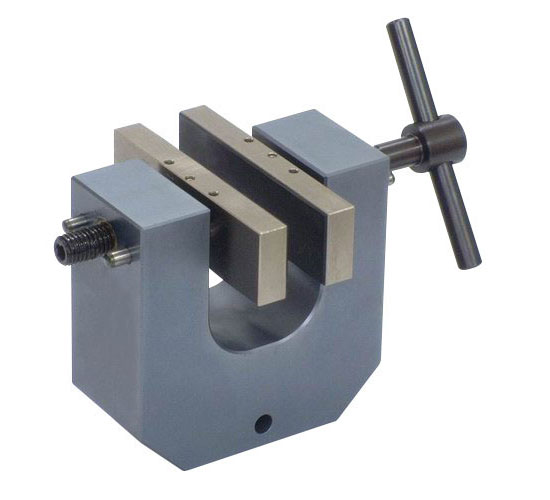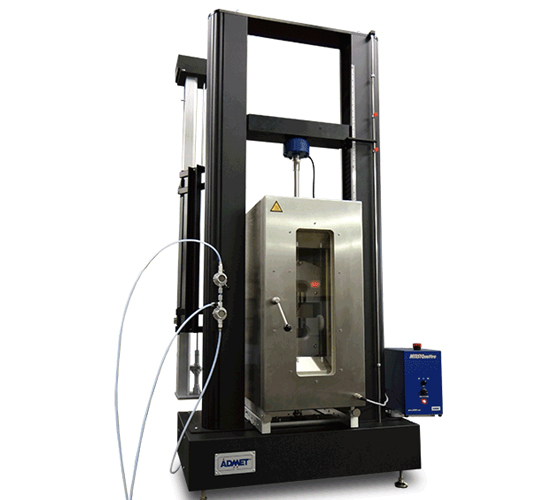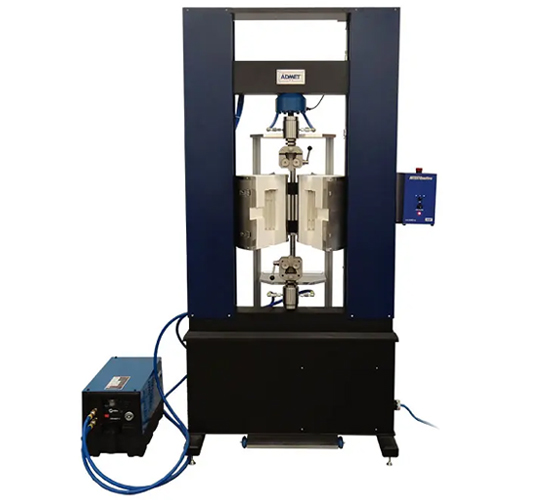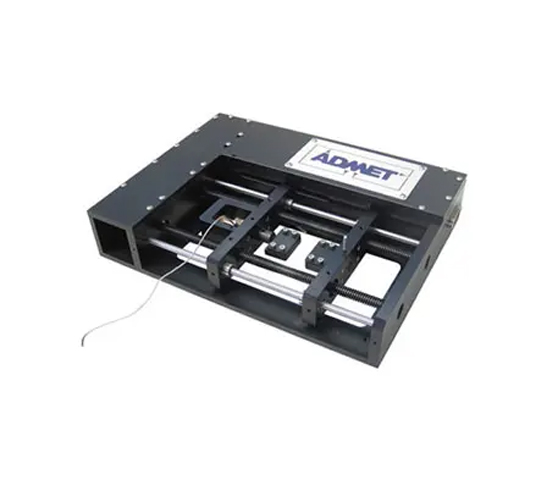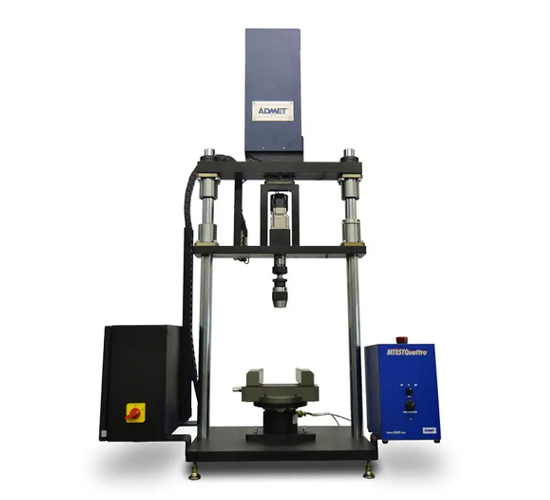Manual Vice Grips Applications
Manual Vice Grips are widely used for holding and securing specimens during testing in Universal Testing Machines (UTMs). These grips provide a reliable method for gripping materials in various testing applications, ensuring accurate and consistent test results. Here are the key applications of Manual Vice Grips:
Applications:
Tensile Testing: Manual Vice Grips are commonly used to hold specimens during tensile testing, where materials are pulled to assess their tensile strength and elongation properties. These grips are suitable for testing materials such as metals, plastics, rubbers, and fibers.
Compression Testing: They are used in compression testing setups to hold specimens while they are compressed between test fixtures, especially helpful in testing materials like plastics, foams, and building materials.
Shear Testing: These grips are applied in shear testing to secure specimens where forces are applied parallel to the material surface, such as testing adhesives, films, and coatings for shear strength.
Peel and Tear Testing: Vice Grips are used to hold samples in peel and tear tests, where forces are applied to test the adhesion strength or tear resistance of materials such as adhesives, laminates, films, and textiles.
Metal Testing: They are used to hold metal specimens such as strips, rods, and wires in testing applications to measure strength, ductility, and formability under stress.
Rubber and Elastomer Testing: Manual Vice Grips are used to secure rubber or elastomer samples during tensile or compression tests to evaluate their elastic properties and resilience.
Composite Material Testing: They are suitable for holding composite materials during tensile or flexural tests, ensuring proper alignment and uniform application of stress. This is essential for testing fiber-reinforced composites used in industries like aerospace, automotive, and construction.
Textile Testing: Manual Vice Grips are used to hold textiles or fabrics during tensile or elongation testing to assess their strength, durability, and stretchability.
Adhesive Bond Testing: These grips are ideal for securing materials during adhesive bond strength testing, such as peel tests or lap shear tests, to assess the bonding efficiency of adhesives used in electronics, automotive parts, and construction materials.
Packaging Material Testing: Manual Vice Grips are commonly used to secure packaging materials like films, papers, and foils during tensile and tear testing to determine their resistance to tearing and strength.
Plastic and Polymer Testing: Manual Vice Grips are used for gripping plastics and polymers in various testing applications to measure tensile strength, yield strength, and elongation.
Wire and Cable Testing: These grips are applied for holding wires and cables during tests such as tensile, elongation, and compression tests to assess their strength, ductility, and performance under stress.
Biomedical and Medical Device Testing: Manual Vice Grips are frequently used in testing biomaterials, medical devices, and implants, ensuring they are securely held in place during stress, fatigue, or impact tests to simulate real-world usage conditions.
Wood and Lumber Testing: These grips are also used to hold wood samples or lumber during bending and tensile tests to assess strength, flexural properties, and resistance to cracking.
Advantages of Manual Vice Grips:
- Simple to Use: Easy manual operation to secure test specimens without the need for complex automation.
- Versatile: Can hold a wide range of materials, from soft polymers to rigid metals, making it a highly adaptable grip option.
- Reliable Clamping: Provides secure clamping, ensuring that specimens do not slip or move during testing, which is crucial for accurate results.
- Durability: Built with high-quality materials to withstand the rigors of mechanical testing while maintaining consistent performance.
- Adjustability: Some models offer adjustable clamping width to accommodate a variety of specimen sizes and shapes.
- Cost-Effective: Ideal for laboratories that need a reliable and affordable manual grip solution for a wide range of testing applications.
Industry Applications:
- Material Science and Research: Used in research and development to test new materials and evaluate their mechanical properties.
- Automotive Industry: Applied in automotive manufacturing for testing components like plastics, metals, and composites used in vehicles.
- Aerospace Industry: Helps in testing metal and composite materials used in aircraft, ensuring they meet strength and fatigue resistance requirements.
- Construction and Building Materials: Used in testing materials like concrete, brick, and wood for their tensile and compressive strength in the construction industry.
- Packaging Industry: Applied in the packaging industry to test materials for tear resistance and durability.
- Consumer Goods and Electronics: Used to test plastics, metals, and adhesives used in consumer products and electronic devices.
- Medical Devices and Biomaterials: Widely used for testing medical implants and biomaterials, ensuring their mechanical properties are within desired specifications for patient safety.
Manual Vice Grips are essential in laboratories and manufacturing settings where precise specimen handling is required during mechanical testing. They offer a cost-effective and versatile solution for testing a wide variety of materials, ensuring reliable results and consistent performance.

